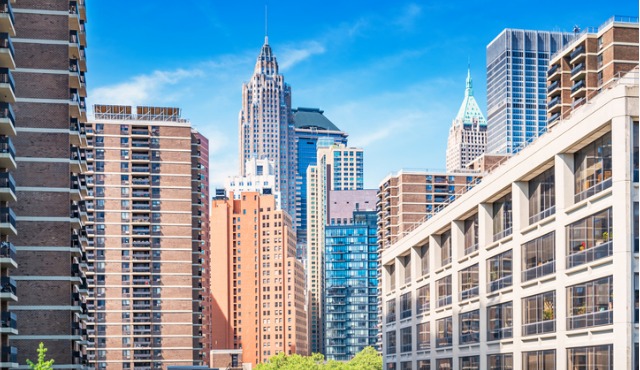By Meghan Belnap
Alternative housing complexes are becoming a lot more common due to their practicality, affordability and sustainability. It’s possible you’ve seen these repurposed buildings around your city without even realizing it, and for good reason...housing alone has become high-demand and expensive in many areas around the world. At the same time, buildings of all shapes and sizes, many of them once lively businesses, are now old and rundown.
Related: 5 Property Investments You Should Consider
You may not realize that many of these properties, including hotels, office buildings, factories, schools and other commercial properties, can be converted into a newly-usable space. Investors have begun to buy these old and abandoned venues, breathing new life into them and converting them into affordable housing for those in need. Here's an overview of how it's done:
Pre-Conversion
Among the challenges in repurposing an old commercial building to be a residential property, the first is finding the right place to start. A few factors should be taken into consideration, including local amenities and resources, such as public transportation. This is especially important for low-income housing situations. A building’s existing shell should also be evaluated.
Once a building is chosen, legal approval is required to convert it to a livable space. The building's "class of use" will likely need to be changed and the location will need to be zoned for residential renovation. The requirements and conditions for this vary, so it’s worth looking into local laws and regulations if one is interested in funding one of these conversions.
Conversion
After all the city's and region's mandatory paperwork is completed, and technicalities and legal matters are settled for the project, the exciting part begins. Depending on the age and prior use of the old building, some demolition may be required. Creating homes from cubicles and classrooms will often require at least some reconstruction within the facility. Walls will have to be torn down and new walls will take their place. Manufactured wall frames can make this process much easier and faster to complete. Plumbing, wiring, insulation, sheetrock, flooring and trim along with other construction will follow suit after the walls are in place. Then paint, appliances, lighting and other finishing touches are added.
Post-Conversion
After a conversion, the property will need to be inspected and legally approved for residential lease. This is essential to ensure the building is safe and functional prior to tenants moving in. If privately owned, the property will likely be rented out as usual. However, if owned by the government or charity, the property may also be used for formerly unhoused individuals, giving them a safe and comfortable place to get back on their feet.
Overall, adaptive reuse of commercial buildings is often a great solution to the demand for more housing. In packed cities, it’s a good way to ensure the existing space is being used efficiently and that low-income individuals have access to public transportation and other amenities. It is also useful to reduce the materials needed for a new build, making it a sustainable choice. Hopefully, this trend will continue to rise in future years to make the very best of these thriving city communities.
 Meghan Belnap is a freelance writer who enjoys spending time with her family. Belnap finds happiness in researching new topics that help to expand her horizons. You can often find her buried in a good book or out looking for an adventure. For more info about wall frames, she recommends contacting Prefab Technology PTY LTD.
Meghan Belnap is a freelance writer who enjoys spending time with her family. Belnap finds happiness in researching new topics that help to expand her horizons. You can often find her buried in a good book or out looking for an adventure. For more info about wall frames, she recommends contacting Prefab Technology PTY LTD.








